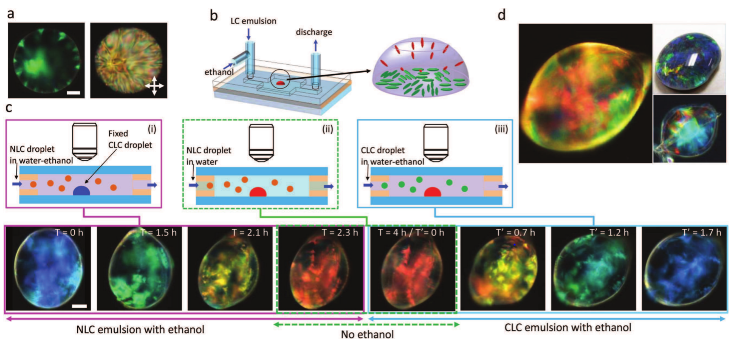
 Liquid Crystals
Liquid Crystals
![]() Bi-directional dielectrophoresis (BDEP)
Bi-directional dielectrophoresis (BDEP)
Usually, dielectrophoresis can actuate particles along one direction. However, it is possible to achieve bidirectional dielectrophoresis using anisotropic property of liquid crystallines without using a complicated cell structure. In addition, we can control the shape, size, position and volume of liquid droplets using biphasic liquid crystals. We also try to implement display devices using the bidirectional DEP.
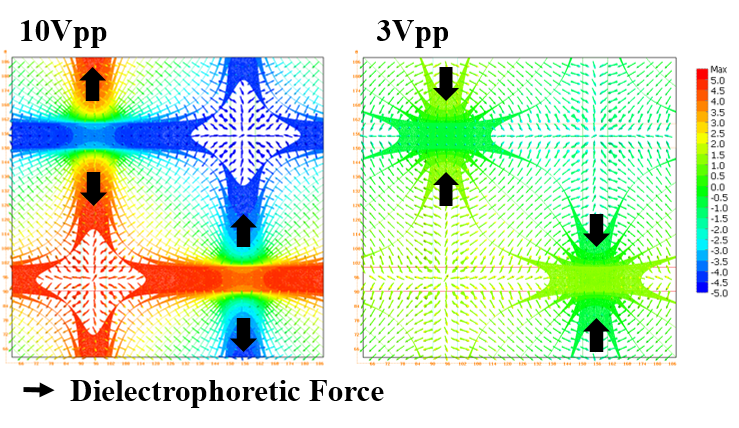
-S. D. Kim, B. Lee, S. W. Kang, J. K. Song*, "Dielectrophoretic manipulation of the mixture of isotropic and nematic liquid", Nature Communications, 6, 7936 (2015)
![]() Cholesteric liquid crystals (CLCs)
Cholesteric liquid crystals (CLCs)
 2D Materials
2D Materials
![]() Liquid crystal of 2D materials
Liquid crystal of 2D materials
Graphene Oxides (GO) have an extremely high Kerr coefficient, and one can control the GO alignment with extremely low electric fields. Using this property, we aim to develop an extremely low power display device using graphene-oxide dispersions.

![]() Photonic crystal of 2D materials
Photonic crystal of 2D materials
A few lyotropic 2D materials exhibits Bragg reflection due to periodic arrangement within solvent. By controlling the 2D material concentration and alignment, one can obtain colorful drawings.
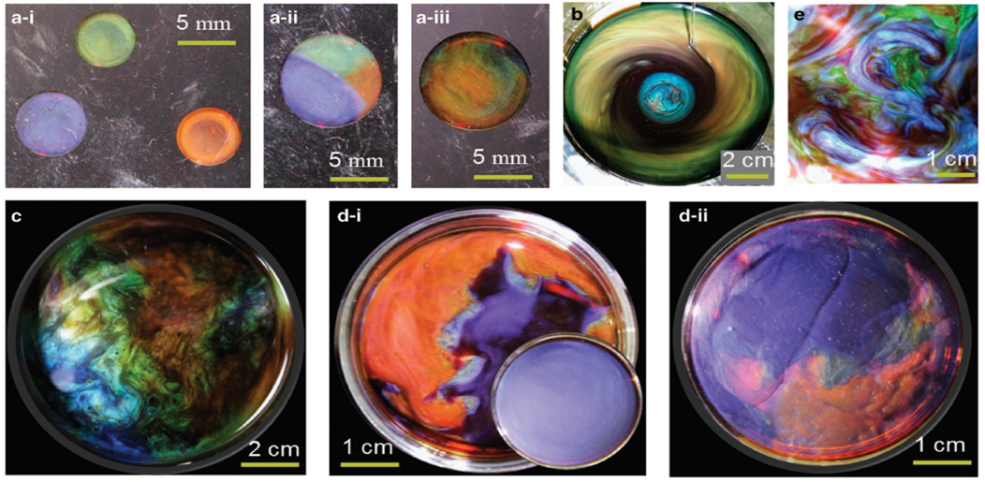
 Quantum-Dot LED (QD-LED)
Quantum-Dot LED (QD-LED)
![]() Colour-tuneable QD-LED
Colour-tuneable QD-LED
Most colour display devices are composed of R/G/B sub-pixels spatially separated in a 'side-by-side' geometry. This layout of sub-pixels is an essential technology in display devices to reproduce a wide range of colours, but it has clear limitations such as the reductions in resolution and optical efficiency. An innovative approach to overcome these limitations is to implement colour-tuneable pixel technology. We research unique device structures that can reproduce various colours in a single pixel.
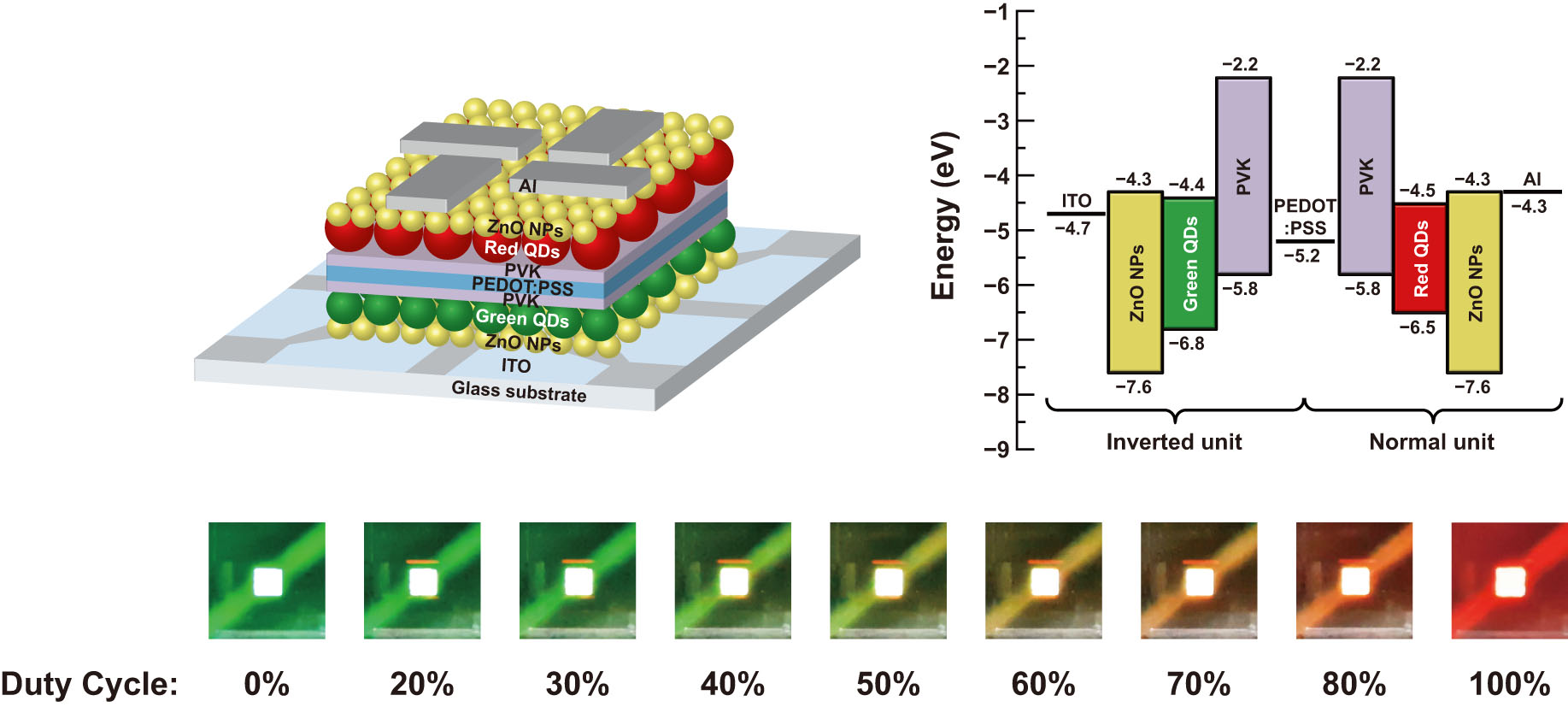
![]() Performance Improvement
Performance Improvement
Quantum dot is a promising material, in which bandgap depends on its size. It emits highly pure color, which is one of the most important factors in display devices. However, it remains several critical drawbacks such as quantum efficiency and lifetime. We research new device structures, materials, and fabrication process that can improve the efficiency and lifetime of QD-LED.
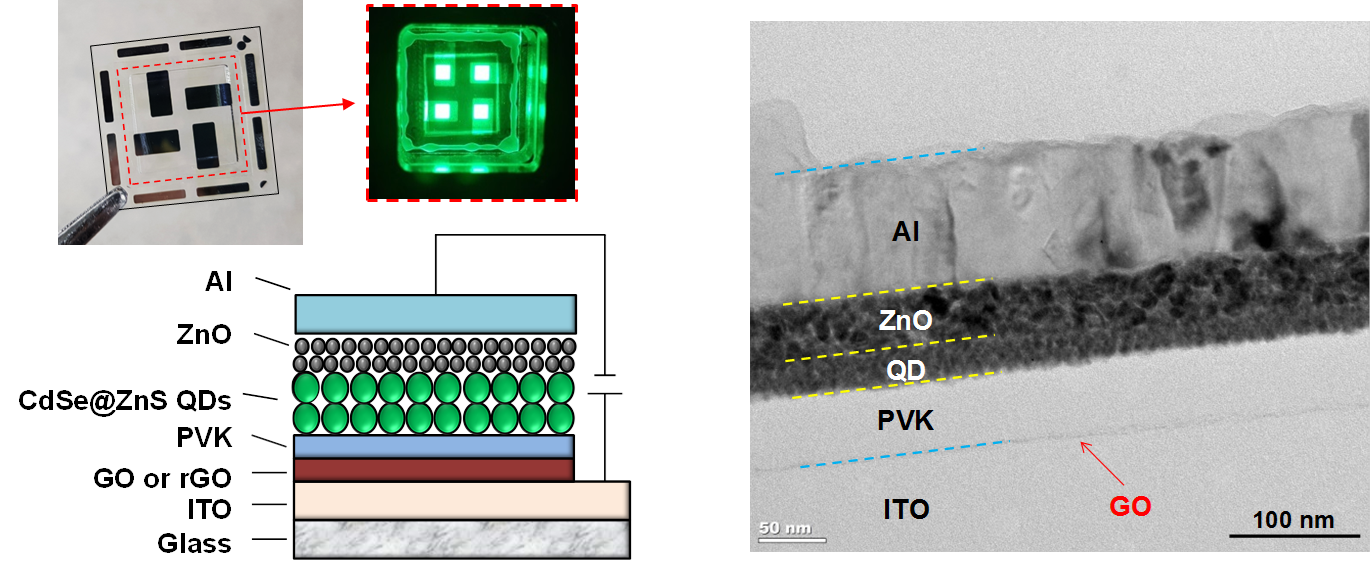
 Energy Harvesting
Energy Harvesting
![]() Triboelectric Nanogenerator (TENG)
Triboelectric Nanogenerator (TENG)
We are facing increasing challenges of diminishing fossil fuels and increasing the energy demand. There is an increasing interest in seeking new methods of energy generation not only large scale energy but also in micro scale energy. We are investigating new methods of harvesting micro scale energy by mainly using colloid and water.



